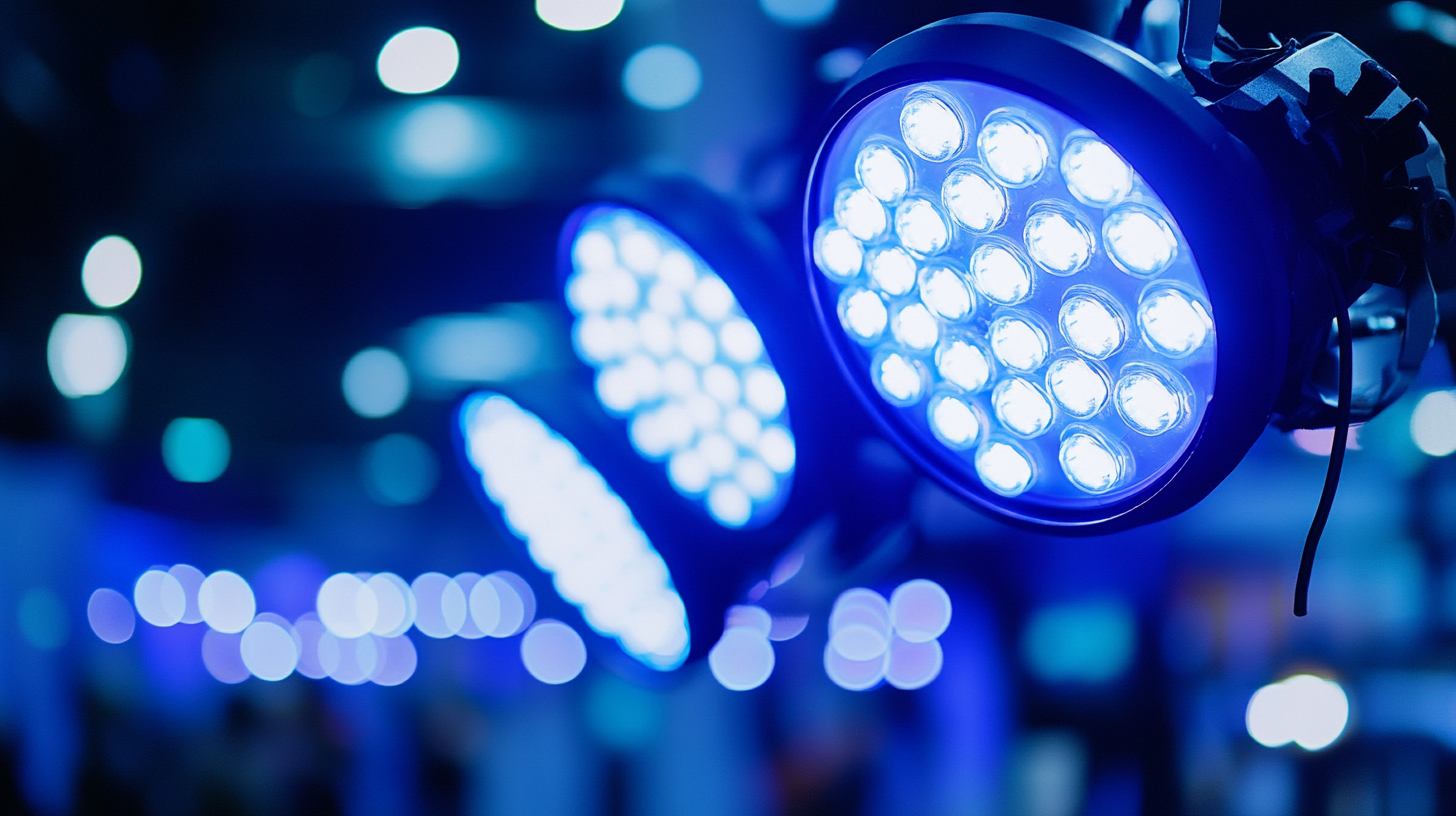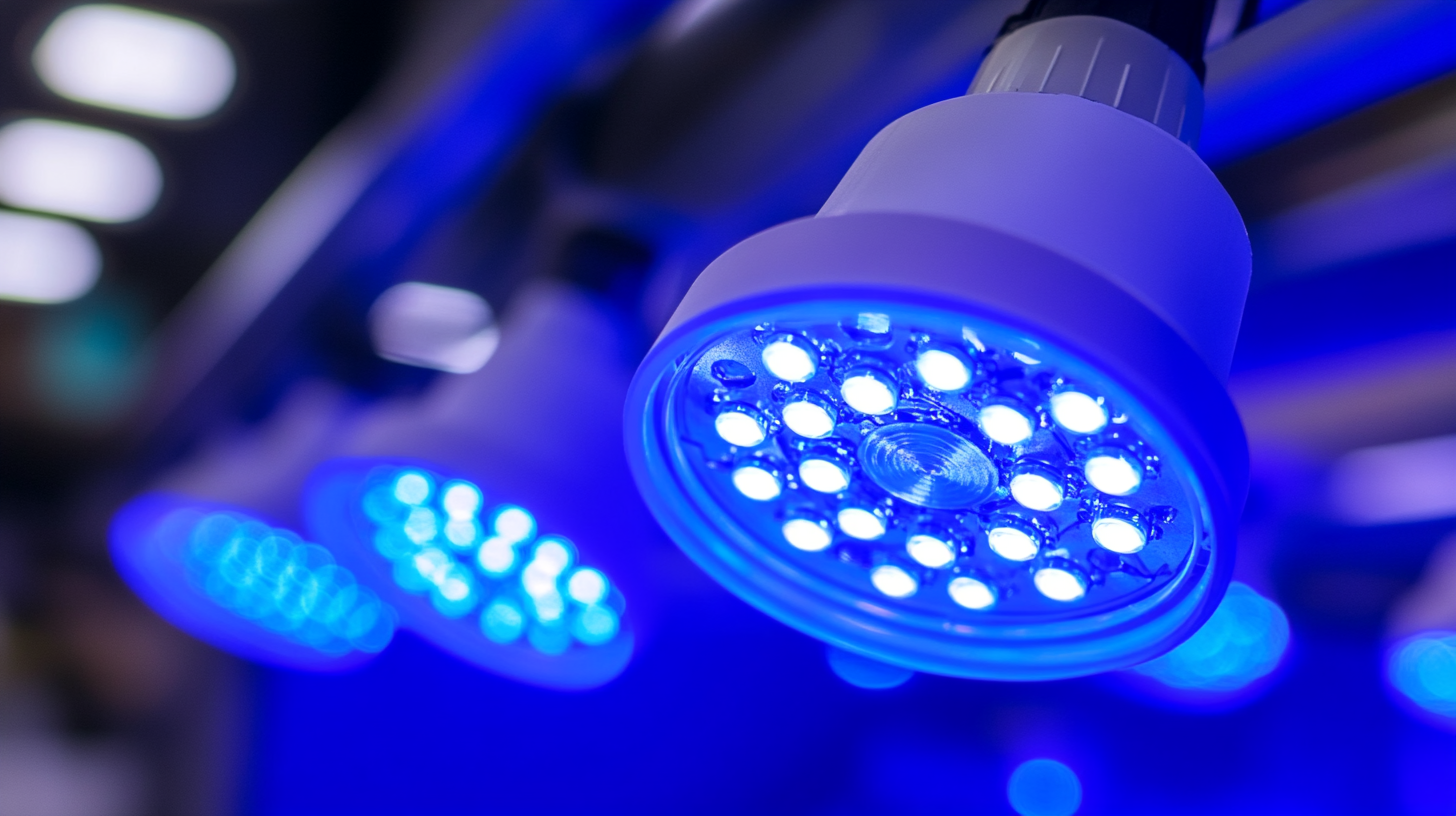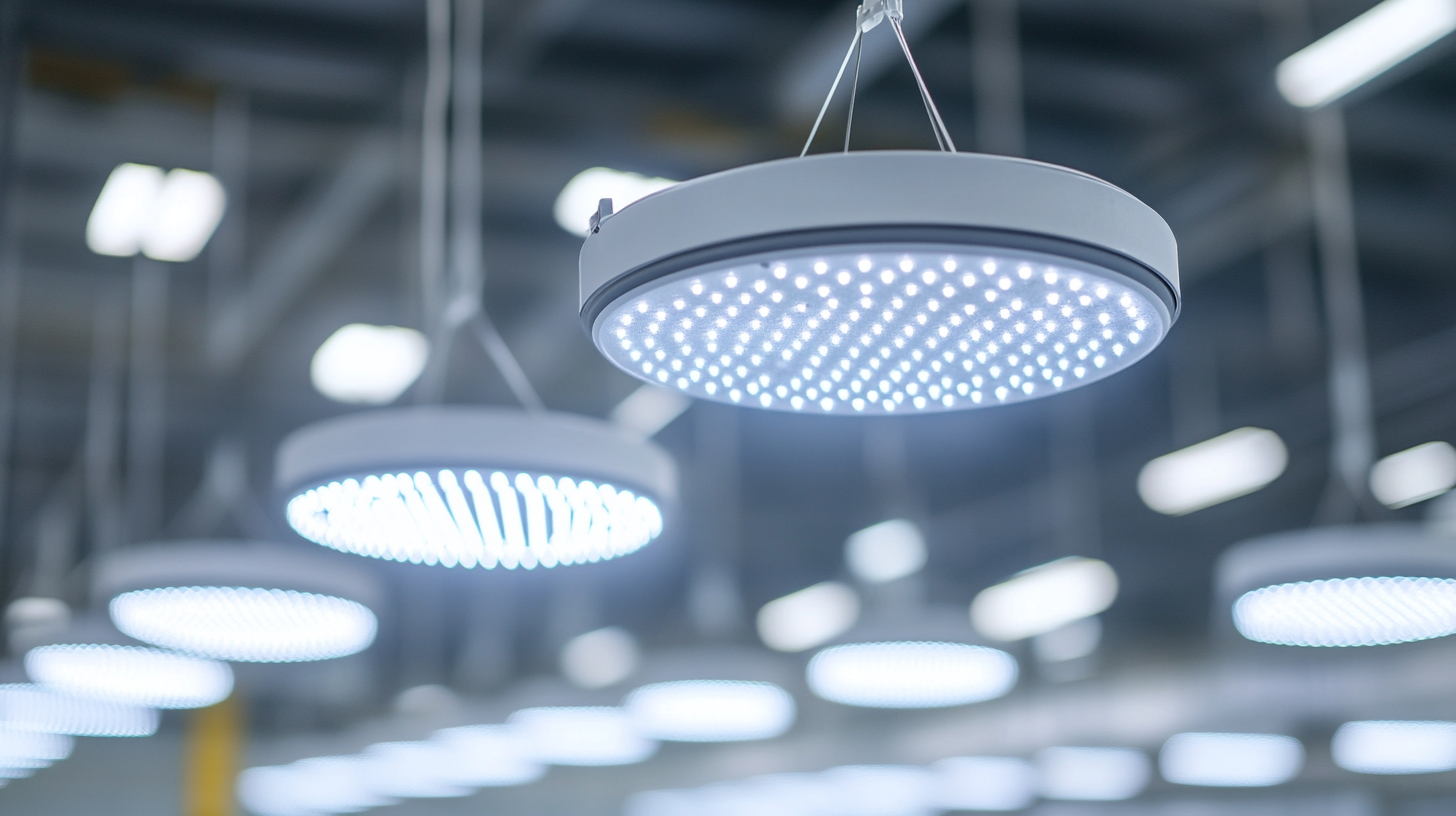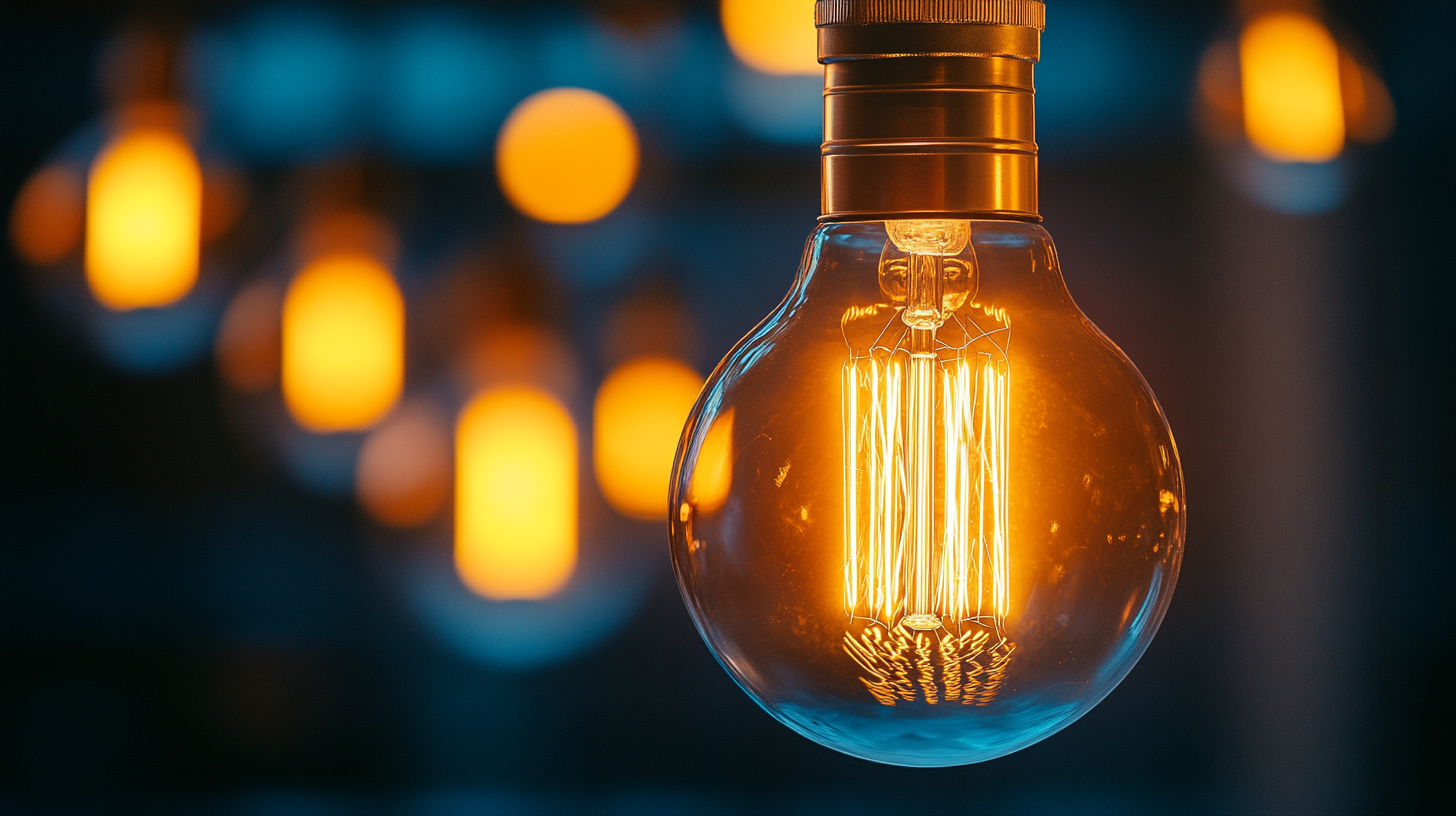
The global Industrial LED flood light market has a lot in store for the year 2025 due to technological innovations caused by consumer demands. Just focus, with energy fading out as an issue, on cost savings. As we discuss some of the trends coming up in the market for Industrial LED flood lights, we shall highlight key factors that are likely to influence purchasing decisions and market dynamics.
These trends are also equally important for buyers who are facing this unique phase filled with innovation and competitive alternatives. This article would, therefore, further discuss product developments, challenges facing the market, and strategies to impact the decision-making process of buyers. Thus, by navigating information on Industrial LED flood lights, buyers can make full use of these insights for their investment optimization and pursue the bright future prospects of their industrial lighting demands.

With huge growth predicted for the industrial LED flood lights market until around 2025, LED lighting has stood out in emphasis on energy conservation and sustainability and has been chosen by industries looking for optimum reduction of operating cost without compromising safety. Greater emphasis must be laid upon the fact that advancement in LED technology and innovation by manufacturers should improve performance and life expectancy far beyond traditional lighting floodlights. Analysts estimate an average growth rate (CAGR) predicted for the LED floodlighting segment, hinting at a never-ending demand for such lights from several industries: construction, mining, and events. Some of the prominent factors driving this increase include growing awareness about environmental sustainability, which in itself has brought about an increasing demand for eco-friendly lighting alternatives. Industries want to cut costs, but they also want to create a positive impact on the environment by cutting down their carbon footprints. Coupled with this is the ever-growing edge from government regulations that target energy consumption. Gradually, industrial LED flood lights are becoming adopted. This implies that in this changing market scenario, buyers need to be on their toes with respect to new technologies, new potential market players, and pricing strategies to maximize returns on investment.

The demand for industrial LED floodlights will peak in 2025, according to many factors that dictate energy efficiency and new technology. Sustainability, for instance, is getting a lot of importance in industries. As companies seek to minimize their carbon footprints, it becomes obvious that switching to energy-efficient LED lighting solutions rather than the traditional sources is the way to go. This shift in itself reflects the multinational regulations promoting energy efficiency, putting businesses under pressure to change their lighting for compliance and cost reductions.
Smart tech is another major driving force for demand. The combination of IoT features into industrial LED floodlights promises higher control, monitoring, and automation. Such a system enables companies to deploy lighting in response to specific operational needs, increasing their efficiency and effectiveness. Besides, with remote control access, maintenance costs are lowered, and equipment lifespan is increased, providing a compelling offer for more reserved buyers.
Furthermore, the accelerating growth of the construction, manufacturing, and warehousing sectors greatly determines industrial lighting needs more robustly. Urbanization is proving to increase the need for high-quality lighting solutions outdoors and indoors. Industrial LED floodlights offer superior illumination and increased safety and productivity, fully qualifying them as a necessary addition in various operational environments. As buyers increasingly demand durability, energy savings, and advanced features, the market for industrial LED floodlights will grow tremendously in the near future.

Technology has influenced the future of flood lighting solutions, providing a smart and efficient flood lighting solution. Recently, when many cities around the world are moving toward smart city initiatives with the development of technologies of smart homes, the industrial LED flood lights market is geared to undergo a change. Smart Lighting Market, which is expected to achieve a compound annual growth rate (CAGR) of 19.3 percent from 2025 to 2034, continues to innovate to improve energy efficiency, automation of using products, and interaction by users.
"Smart technology for industrial floodlighting is the latest trend. It uses different kinds of advanced sensors and control systems installed to empower users in distant management of lighting and energy usage by dynamically adapting to real time situation. Breakthroughs in technologies for lighting in the modern world have converted traditional light sources into multi-functional systems which communicate with other devices within a smart ecosystem, offering applications that reach beyond mere illumination.
Future of flood lighting is also bound to be shaped by partnerships between the technology suppliers. Strategic alliances are leading the creation of integrated lighting solutions with elegance and high technology. Industrial buyers are going to be in a position to adopt a new solution paradigm when they will be demanding solutions that address their lighting needs, along with the sustainability demands that contribute to seamless smart infrastructures.
New high-tech floodlight technologies promise to improve efficiency and the user experience, as demand for complex, intelligent lighting solutions increases. In the industrial sector, keeping abreast of changing trends allows buyers the opportunity to realize the benefits of the advanced technologies that bring light into areas but also ensure safety and improved productivity.

The global industrial LED flood lights market is expected to expand profusely in 2025, backed by growing technological advancements and energy-efficient lighting demand. One major area of concern for the buyers in this changing scenario would be to understand those regional dynamics affecting the market. Some areas are fast emerging as growth drivers and thus are lucrative investment and growth opportunities.
In North America, there is increasing demand for advanced lighting solutions due to infrastructure improvements and smart city programs. Regulatory framework calls for sustainable solutions encouraging companies to replace conventional lighting with LEDs. Meanwhile, Asia-Pacific is rising rapidly with urbanization and expanding industrial sector being the key drivers. There is heightening demand for LED floodlights in countries such as India and China driven by huge infrastructure outlays and increasing government support for energy-efficient technologies.
Europe is also a critical place to look at, as environmental regulations instigate industries to adopt greener practices. The European Union directives on energy efficiency heavily affect this market, establishing competition in LED lighting that rewards innovation. Emerging markets in Latin America and the Middle East are now beginning to incorporate the benefits of industrial LED floodlights, presenting a promising potential for both manufacturers and buyers alike. Knowledge about these regional trends will position buyers to make well-informed decisions within the growing LED floodlight market.
In the year 2025, industrial LED floodlight buyers are going to face a more fluid marketplace which will make needed strategic approaches to maximize returns on investment (ROI). With advanced technology, smarter lighting solutions will be available, and thus the buyers have to tap the data-driven insights for their decisions. There will be a lot of analysis required on product performance and also ensuring that the purchases are matching some of the operations needs as it will be critical in ensuring ample financial returns on investments.
To optimize ROI, the buyers should consider the artificial Intelligence and automation systems in their buying process. For example, AI tools can simplify performance evaluation to compare cost and benefits better by the buyers. Mostly, market and consumer-driven research will be essential in evaluating products and driving purchases. Thus strategic ROI analysis will optimize procurement strategy going forward and help convert tech investments into huge wins.
In the larger arena of an economy, this statement of ROI gains utmost importance because it helps understand a buyer's journey through all the pitfalls of the myriad sectors. As the trends evolve, especially in media valuation and new technologies, justification for investments will not be solely given for initial cost but long-term held value. The market for industrial LED floodlights is no different; buyers will thus depend on these dynamic understandings to gain massive yet lucrative outcomes on their investments.
Let us help you get started with our superior LED lighting products.
Get all the latest news from BrightLED.
Copyright © Bright LED. All rights reserved.
STAY CONNECTED

